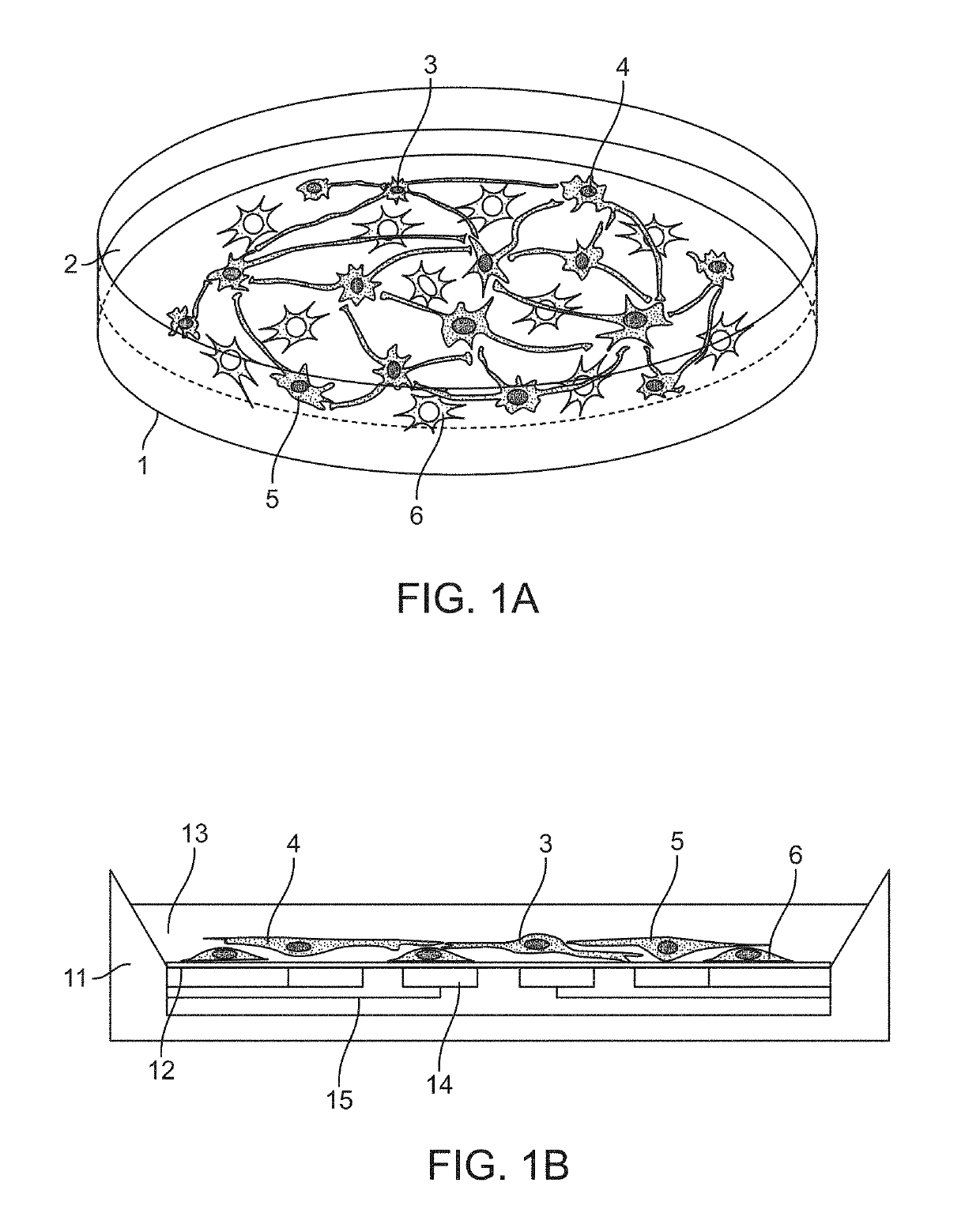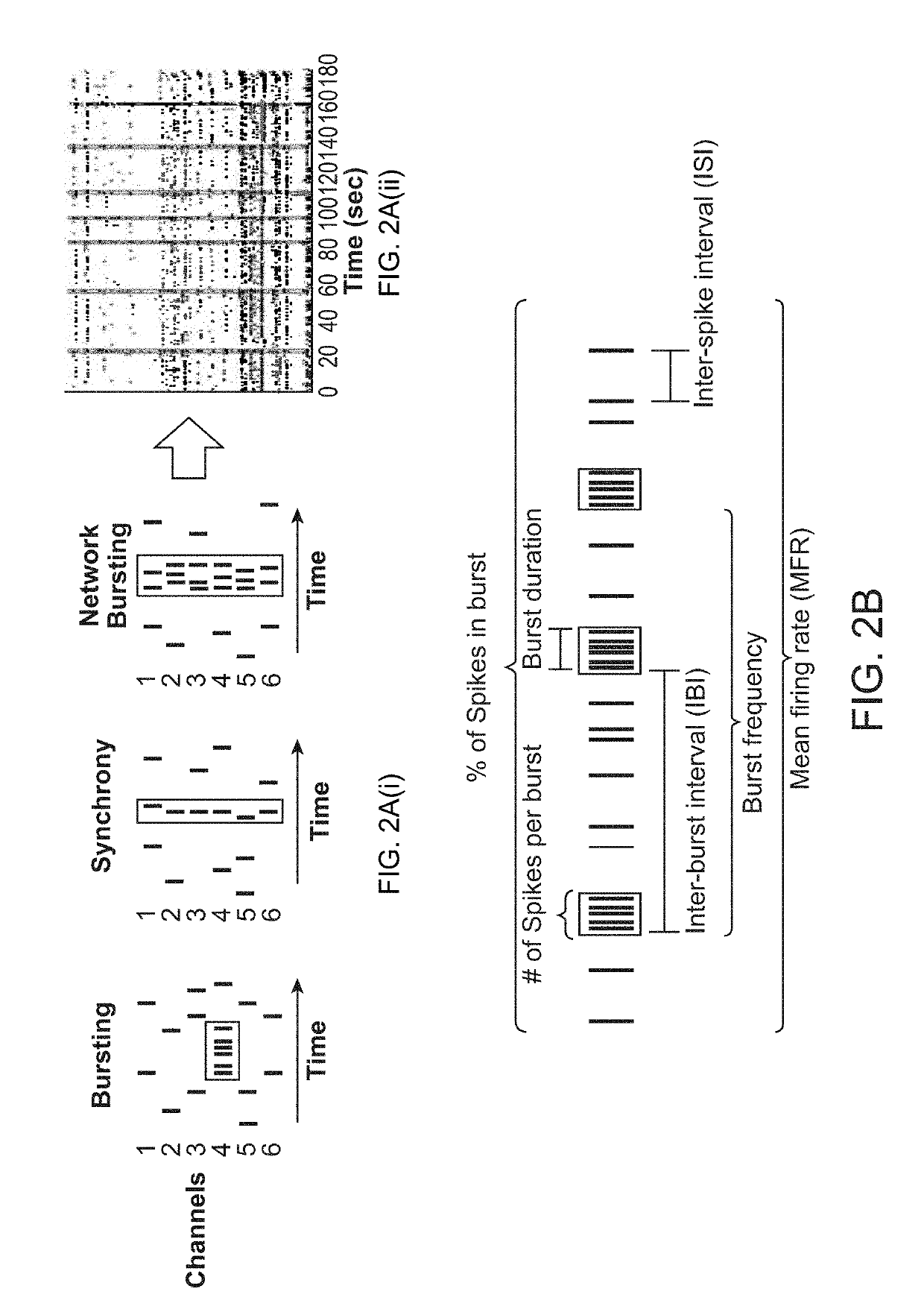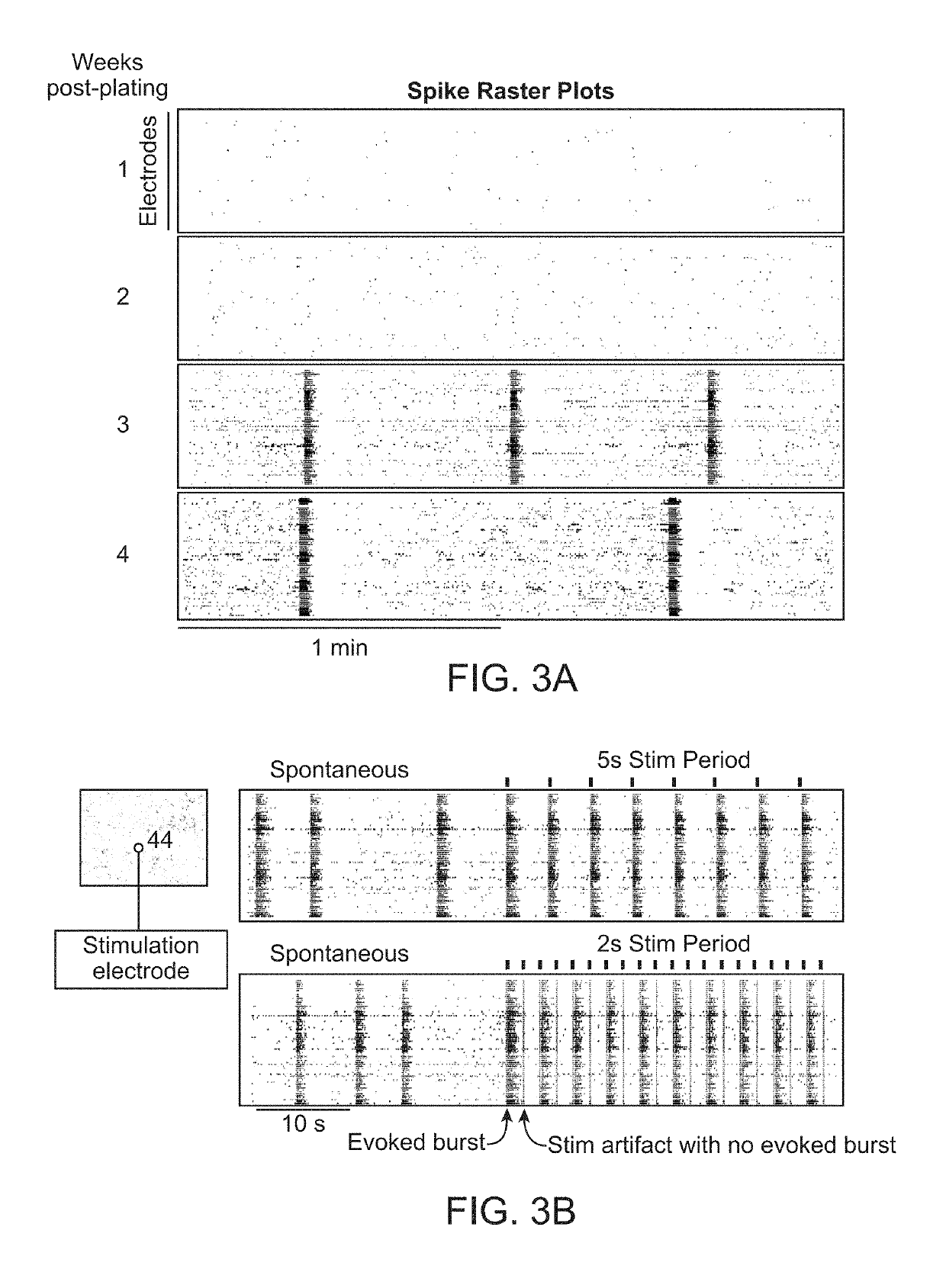Biologically relevant in vitro screening of human neurons
a human neuron and in vitro screening technology, applied in cell culture active agents, instruments, artificial cell constructs, etc., can solve the problems of low percentage of hits from any screening program, unable to assess the impairment of neuronal function, and unable to achieve human cell assays
- Summary
- Abstract
- Description
- Claims
- Application Information
AI Technical Summary
Benefits of technology
Problems solved by technology
Method used
Image
Examples
example 1
Development of Spontaneous Synchronized Network Activity in Neural Co-Cultures Consisting of Primary Glial Cells and Glutamatergic Excitatory iN Cells Measured on Multielectrode Arrays (MEAs)
[0140]Induced excitatory neurons were seeded at day 4 after induction by transcriptional activation of the neurogenic transcription factor NGN2, on 12-well MEA plates (Axion BioSystems) coated with matrigel. A total of 600,000 iN cells were plated per well. Primary glial cells were obtained by dissociating brains of mouse pups at postnatal day 3 with hippocampal and cerebellar structures being removed in advance. Dissociated brains were pre-cultured and passaged twice to remove primary neurons. Glial cells were then seeded directly on the plated iN cells at a density of 120,000 cells per well.
[0141]Neuronal activity was recorded using the Axion BioSystems MEA system set to detect neural spikes applying a bandpass filter from 200 Hz to 3 kHz (Neural Spikes mode). Recordings of spontaneous neurona...
example 2
Development of Spontaneous Synchronized Network Activity in Neural Co-Cultures Consisting of Primary Glial Cells and a Mixture of Glutamatergic Excitatory iN Cells and GABAergic Inhibitory iN Cells Measured on MEAs
[0148]Induced excitatory neurons were seeded at day 4 and induced inhibitory neurons were seeded at day 6 after induction. A total of 200 000 excitatory iN cells and 200 000 inhibitory iN cells were plated simultaneously per well on 12-well MEA plates (Axion BioSystems) coated with matrigel. Primary glial cells were obtained as described in Example 1, and seeded directly on the plated iN cells at a density of 100 000 cells per well.
[0149]Inhibitory iN cells showed a significantly higher apoptosis rate than excitatory iN cells after plating which resulted in an approximate ratio of 70% / 30% (excitatory / inhibitory) after 2 weeks in culture, thereby reflecting the actual ratio present in most regions of the human brain. Neuronal activity was recorded using the Axion BioSystems...
example 3
Effects of Chemical Compounds on Neuronal Network Activity in Neural Co-Cultures Consisting of Primary Glial Cells and Glutamatergic Excitatory iN Cells Measured on MEAs
[0151]Neural co-cultures were produced as described under Example 1. Neuronal activity was recorded using the Axion BioSystems MEA system set to detect neural spikes applying a bandpass filter from 200 Hz-3 kHz (Neural Spikes mode) and the threshold values for defining active electrodes, bursts and spontaneous synchronized network activity were used as previously described (Example 1). Recordings were performed at week 4 in culture for 10 minutes for each condition including baseline measurements prior to compound application and test measurements following the addition of a single compound. Between baseline and test condition recordings, the plates were store in an incubator (37° C., 5% CO2) to readjust pH of the media. Each compound was applied to a different well in order to prevent secondary effects of previous t...
PUM
| Property | Measurement | Unit |
|---|---|---|
| time | aaaaa | aaaaa |
| time | aaaaa | aaaaa |
| time | aaaaa | aaaaa |
Abstract
Description
Claims
Application Information
 Login to View More
Login to View More - R&D
- Intellectual Property
- Life Sciences
- Materials
- Tech Scout
- Unparalleled Data Quality
- Higher Quality Content
- 60% Fewer Hallucinations
Browse by: Latest US Patents, China's latest patents, Technical Efficacy Thesaurus, Application Domain, Technology Topic, Popular Technical Reports.
© 2025 PatSnap. All rights reserved.Legal|Privacy policy|Modern Slavery Act Transparency Statement|Sitemap|About US| Contact US: help@patsnap.com



